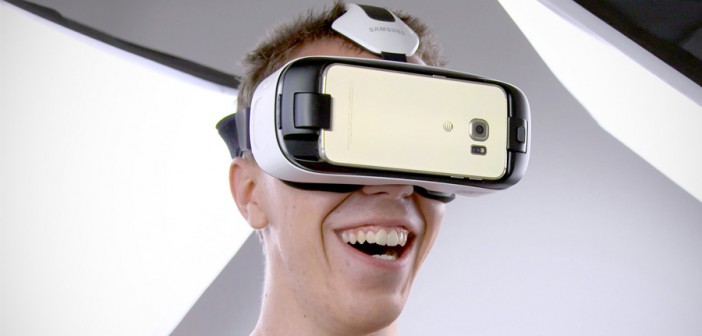Four brands with awesome virtual reality experiences
Virtual reality is the next big thing. Perhaps you’ve heard? Here are four of our favorite examples of branded VR content.
Virtual reality (VR) was the star of the show, both in Las Vegas in January and again at Mobile World Congress two weeks ago. But while “the next big thing” often takes a while to come to fruition, VR is already here.
Headsets like Oculus Rift and Samsung Gear became available to the public fairly recently, but brands have been on board for quite a while.
One such brand is Lowe’s, which stands out in the VR space for the Holoroom experience that allows consumers to build their dream kitchens and then see them before committing to thousands of dollars worth of renovations.
That almost mirrors the way most brands look at VR. What Lowe’s did was extremely involved, making it the exception rather than the rule.
“A campaign can be a good way to dip your toes into the new technology, but it’s not really a commitment,” offers Sonia Schechter, executive director of digital marketing at Marxent.
However, some of those brands have tested the waters in really cool ways. Here are four of our favorites from four different industries:
Food and beverage: McDonald’s
McDonald’s Sweden just launched a new promotion that lets kids turn their happy meal boxes into VR headsets reminiscent of Google Cardboard. Happy Goggles cost about $4 and tie in with Sportlov, a recreational holiday during which many Swedish families go skiing.
This foray into VR is temporary – there were about 3,500 headsets made, only available at select McDonald’s locations last weekend and next weekend – it’s still good for the technology’s long-term success. Happy Goggles could get kids excited about VR and where there are kids, there are parents. (With money.)
“I think the industry was late to digital and mobile, and the fact that it’s getting out ahead with VR and figuring it out before it goes mainstream is only going to benefit clients, agencies and everyone,” says Paul Caiozzo, a partner at Office of Baby.
Automotive: Volvo
When a brand like Mountain Dew does VR, it’s a cool experience but one that ultimately isn’t that connected to soda. But buying a car is a much more involved process, so VR could really enhance the customer journey within the auto industry.
VolvoReality gave potential customers a chance to virtually test drive its XC90 SUV in November 2014, experiencing the car from a driver’s perspective. The experience was optimized for Google Cardboard, but the brand made sure that it was more widely available, as well.
Like Happy Goggles, VolvoReality could be watched as a video on a regular smartphone – which it was; the teaser has 195,000 views on YouTube.
Travel and hospitality: Marriott
Marriott was another early adopter of VR, using Oculus Rift technology to create the Teleporter. In what looked like a futuristic phone booth, users put on headsets transporting them to Downtown London and Hawaiian beaches.
A year later, the brand tested VR in a more subtle way by bringing the experience to individual hotel rooms. Virtual postcards allow guests to experience China, Chile and Rwanda – but also Marriott, according to Caiozzo.
“What this does for Marriott is, it tells consumers that it’s taking the time to be on the cutting edge,” he says. “I don’t think the brand thinks of [VR] as a sales driver; it’s more of a brand driver.”
Retail: JCPenney
When you think of “cool,” JCPenney is most likely not the first (or second or third…) brand that comes to mind. But the retailer fought that image during the holidays by setting up VR experiences at four malls around the country.
JCPenney promoted its VR offerings with geo-targeted Facebook ads, hoping to draw more families and young people to the store. Once there, they put on an Oculus headset and went to the North Pole, where they were able to interact with reindeer, elves and snowmen.
Like Marriott, JCPenney’s VR is mostly about branding, highlighting that the store carries popular brands like Nike and Kitchenaid. But “Twas the Flight Before Christmas” did have more of a direct sales component; participants were given coupons and gift cards upon returning from the North Pole.



